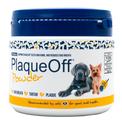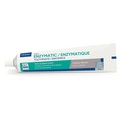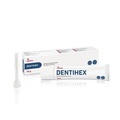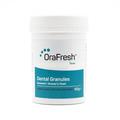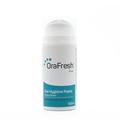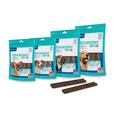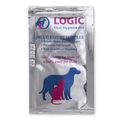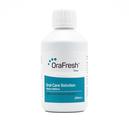The health and hygiene of a dog’s mouth is often overlooked until an obvious problem becomes apparent. We sometimes forget that dogs, like us, need regular attention paying to their teeth in order to prevent the build-up of tartar and plaque, keep breath fresh, and maintain the health of the gums.
As with all things, prevention is easier than cure, so it is worth getting your dog used to teeth cleaning at an early age. Observing routine dental care should help prevent periodontal disease, tooth loss and similar complaints in the future.
Practice opening the mouth, touching the teeth, and occasional hand feeding. This will get your dog used to the feel and presence of you in the mouth area. Choose dental treats, natural chews and chew toys that are suitable for your dog’s age and size.
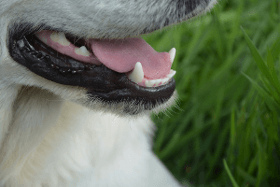 Feeding small dental treats to large dogs that can swallow them whole will have zero abrasive effect and won’t rid the teeth of bacteria. Think about feeding a larger chew or bone (providing it’s supervised) to larger breeds as this will be more beneficial.
Feeding small dental treats to large dogs that can swallow them whole will have zero abrasive effect and won’t rid the teeth of bacteria. Think about feeding a larger chew or bone (providing it’s supervised) to larger breeds as this will be more beneficial.
Aim for regular brushing of the teeth, either with a toothbrush, finger brush or just your finger. Make sure you’re using a pet toothpaste, not a human one, as this can be very dangerous. Start by familiarising your dog with the taste of the toothpaste by putting some on your finger and sliding it along the gum line.
When your dog is comfortable with this, move on to a finger toothbrush or regular toothbrush. Set a routine and do it consistently. Aim to see your vet for dental check-ups every 6-12 months, just to check you’re not missing anything and get advice on suitable care products.
OraFresh Oral Hygiene Paste for cats and dogs is a versatile product that makes maintaining oral health easy and enjoyable. The palatable poultry-flavoured paste contains mild polishing beads and naturally occurring enzymes to help fight bacteria and break down plaque, improving the smell of breath and supporting the overall health of the mouth.
Even better is that OraFresh works as an alternative to toothpaste and can be used with or without brushing, so dogs that find brushing stressful or uncomfortable needn’t miss out on regular cleaning. The paste can be added to food or applied to a paw (for cats to lick off) if a less direct approach is better.
While it may seem daunting at first, with patience and care, both you and your dog will start to feel confident with it, and may even enjoy the bonding experience that regular brushing brings.
If you need any further advice on suitable dental care or cleaning, please don’t hesitate to get in touch!
Written by: Hannah

